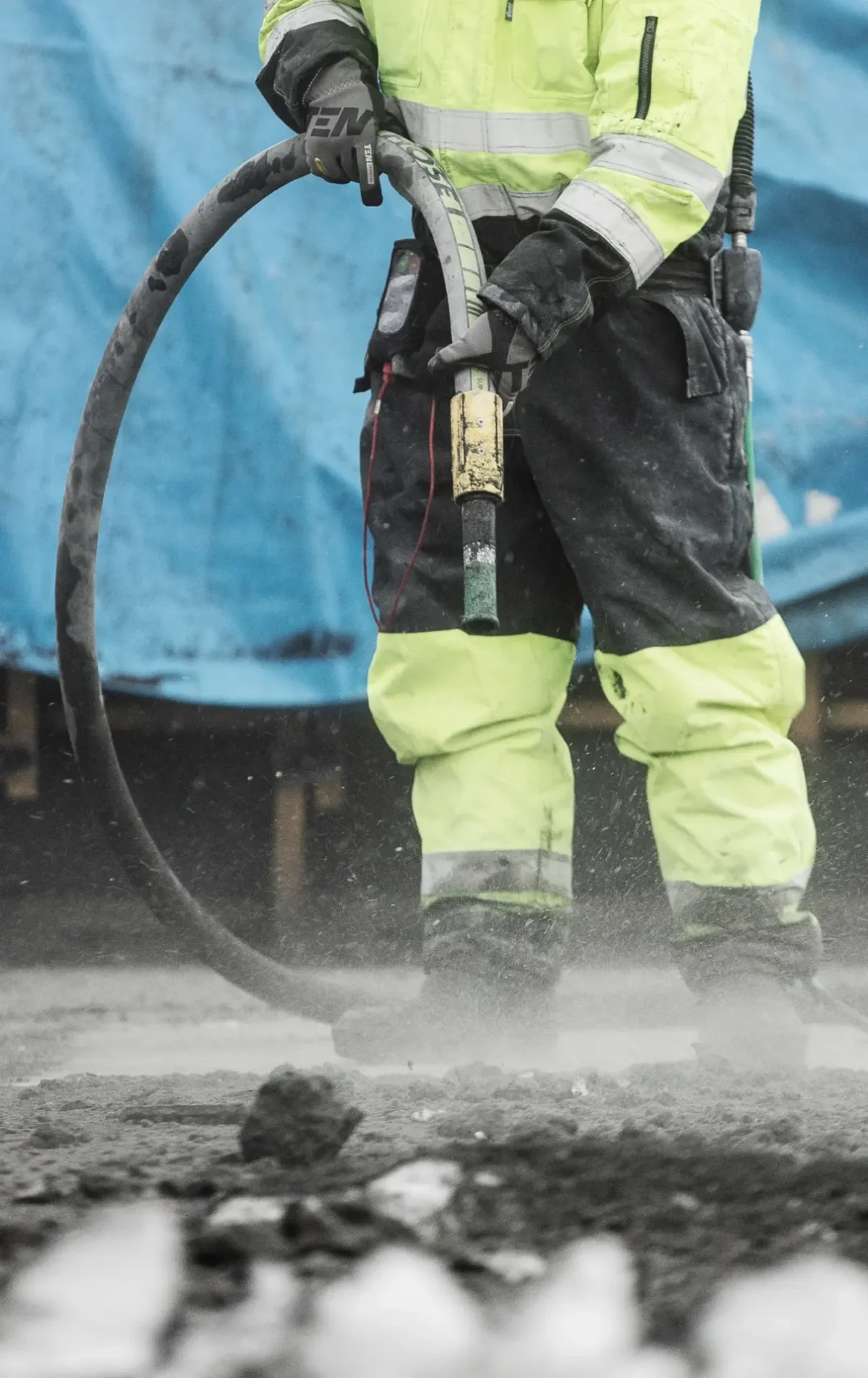Part 2 of Understanding the Inner Workings of Commercial Sandblasting Equipment

Posted on December 26, 2023 by Brent Phillips
In our last blog, we discussed three of six commercial sandblasting components commonly found in commercial sandblasting equipment.
- Air Compressor
- Sandblasting Pot
- Blast Media
Today, we’ll delve into the last three components of commercial sandblasting equipment.
- Blast Hose
- Blasting Nozzle
- Dust Collector
The Last Three Components of Commercial Sandblasting Equipment
As you may recall, commercial sandblasting equipment is a powerful tool used in various industries for surface prep and cleaning. The sandblast media is used under immense air pressure and water to remove old coatings, dirt, contaminants, or rust.
The applications of commercial sandblasting equipment are widely used in water asset management, food storage, oil and gas, and marine environments. It efficiently removes old coating layers and corrosion and can smooth out surface imperfections, leaving a clean surface for proper adhesion of new coatings.
1. Blast Hose
A blast hose transports compressed air and abrasive material from their respective sources. The hose must be durable enough to withstand high-pressure conditions while maintaining flexibility for ease of use during operation.
A blast hose plays a crucial role in the sandblasting process, serving as a vital component that ensures the success and efficiency of the operation. First and foremost, the blast hose is responsible for delivering the abrasive material to the treated surface. It acts as a conduit through which high-pressure air or water propels abrasive particles, such as sand or grit, towards the target area.
Without a properly functioning blast hose, the entire sandblasting process would halt. Furthermore, the blast hose is designed to withstand extreme conditions and handle significant pressure levels.
The durability is essential as it allows for prolonged use without compromising performance. The reinforced construction of blast hoses ensures they can withstand abrasion from internal and external factors, such as sharp edges or rough surfaces.
Another critical aspect of blast hoses is their flexibility—engineered to be highly maneuverable, enabling operators to access even hard-to-reach areas during sandblasting operations. That flexibility enhances overall efficiency by maximizing coverage and ensuring thorough surface preparation.
2. Blasting Nozzle
The sandblasting nozzle is an integral part that controls airflow and abrasive material flow. It directs the high-velocity stream toward the target surface, ensuring precise cleaning or preparation. Nozzle types are easily changed depending on the project’s specific requirements, such as surface texture or area coverage.
When it comes to sandblasting, the nozzle plays an essential part in the efficiency and effectiveness of the sandblasting process. A sandblast nozzle controls the flow and direction of abrasive materials, allowing for precise and targeted cleaning or surface preparation.
There are various types of nozzles available for different sandblasting applications. One commonly used type is the venturi nozzle, which uses a tapered inlet and outlet design to accelerate the velocity stream of abrasive particles up to 450 miles per hour. These nozzles are ideal for removing tough coatings or rust from surfaces.
Another type is the wide-throat nozzle with a larger opening that allows up to 60% more abrasive material. That makes it suitable for applications requiring higher production rates in tight spots inside pipes or when working with larger surface areas on bridges.
Additionally, specialty nozzles, such as fan nozzles, disperse the abrasive material on a broader pattern, making them useful for quickly covering larger areas.
3. Dust Collector
Lastly, a dust collector is critical in maintaining a clean working environment by capturing airborne particles generated during sandblasting operations. It helps prevent contamination and ensures operator safety by effectively removing dust and debris from circulating in the surrounding area.
The dust collector plays a vital role in commercial sandblasters, ensuring safety and environmental protection. When it comes to sandblasting, the generation of dust particles is inevitable. The blast particles can pose serious health risks to workers if not adequately controlled. The dust collector is crucial in capturing and containing these harmful particles, preventing them from being released into the air.
Not only does a dust collection system protect the health and well-being of workers, but it also contributes to environmental preservation. Effectively trapping airborne dust particles minimizes their dispersion into the surrounding environment. That prevents contamination of nearby ecosystems and ensures compliance with environmental regulations.
Harnessing the Power of Commercial Sandblasting Equipment for Efficient Surface Preparation
In conclusion, harnessing the power of a commercial sandblasting crew is essential for achieving efficient surface preparation. By utilizing the expertise of the professionals at Cunningham Inc., operations managers, facility managers, and asset managers can ensure that their surfaces are adequately cleaned and prepared for various applications.
To achieve optimal results, hire the best sandblasting professionals in the industry. Cunningham Inc. has decades of experience and access to state-of-the-art equipment, ensuring surface preparation gets carried out efficiently and effectively.
Don’t compromise on surface preparation—choose reputable professionals with top-notch commercial sandblasting equipment to consistently achieve outstanding results. Call the team at Cunningham Inc. at (620) 848-3030 today!